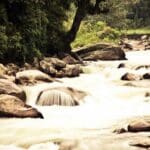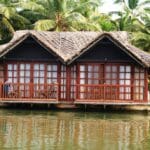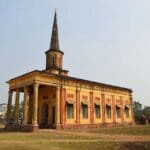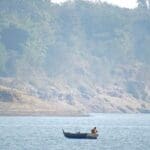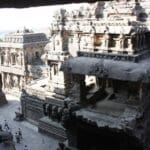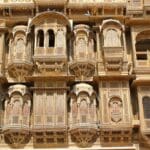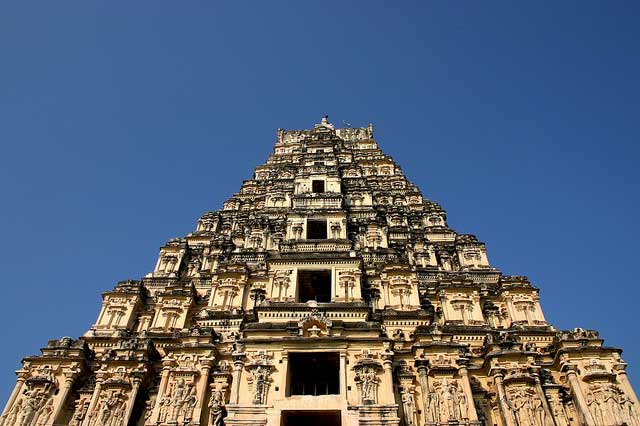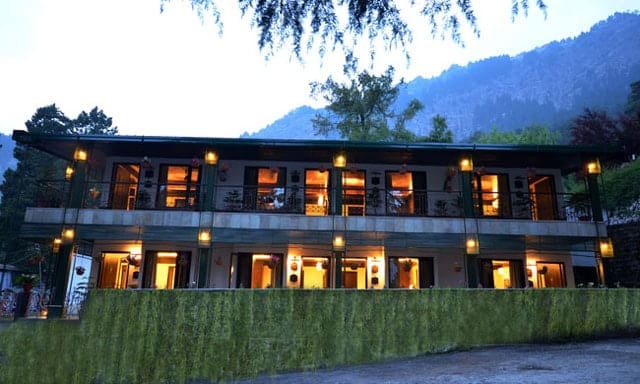Nestled amidst the tranquil hills and ancient charm of Almora, the Govind Ballabh Pant Museum stands as a proud testament to the cultural, artistic, and historical legacy of Kumaon. As custodians of Uttarakhand’s rich past, we invite you to journey with us through the fascinating corridors of this distinguished institution. The museum is more than a repository; it is an immersive experience that bridges centuries, dynasties, and artistic traditions, inspiring scholars, art lovers, and travelers alike to appreciate the profound depths of Uttaranchal’s heritage.
A Tribute to a Visionary: Pandit Govind Ballabh Pant
The purpose of the Govind Ballabh Pant Museum transcends presenting artifacts. Established in 1980 on the iconic Mall Road, it commemorates the pivotal contributions of Pandit Govind Ballabh Pant, a revered freedom fighter and the first Chief Minister of Uttar Pradesh, whose commitment shaped not only national but regional destinies. The museum celebrates his tireless work not just for India’s independence, but also for the development and upliftment of Uttarakhand’s people and culture.
Location and Accessibility
Strategically located on bustling Mall Road, the museum is situated at the heart of Almora. Its central position places it within easy walking distance from the Almora bus stand, making it highly accessible for travelers from all walks of life. Clear signage, motorable routes, and ample connectivity ensure everyone can savour what the museum offers.
Museum Timings and Visitor Information
-
Open: Tuesday to Sunday, from 10:30 AM to 4:30 PM
-
Closed: Mondays, government, and select national holidays
-
Entry Fee: None or nominal (verify before visit)
-
Facilities: Restrooms, cloakroom, and a small souvenir shop
-
Duration: Allocate 1–2 hours for a comprehensive visit.
Architectural Essence: A Sanctuary of Heritage
The building itself stands as a subtle blend of colonial and regional Kumaoni architecture. Its understated elegance allows the exhibits to shine, while the layout maximizes space and lighting to create a contemplative atmosphere. Step through the unobtrusive entrance and you’ll be greeted by the distinct aroma of ageing wood, invoking a sense of nostalgia and reverence for bygone eras.
The Collections: Embracing Centuries of Kumaon’s Artistry and Valor
1. The Katyuri and Chand Dynasties: Regal Reminiscences
Among the museum’s most prized acquisitions are the breathtaking artifacts from the illustrious Katyuri and Chand dynasties. Reigning over Kumaon for centuries, their legacy is encapsulated through:
-
Intricately carved idols and stone sculptures
-
Copper plates with ancient royal inscriptions
-
Bronze relics and coins narrating stories of commerce and conquest
-
Weapons and ceremonial items used by the nobility
These objects are historically invaluable, offering profound insights into the dynastic rule that shaped the social, political, and cultural narrative of Kumaon.
2. Kumaoni Paintings: Aipan—The Artistic Soul of Kumaon
Aipan art, the signature Kumaoni painting style, receives pride of place in the museum. Distinguished by geometric patterns drawn with rice paste on ochre-red backgrounds, these spiritual and vibrant works represent tradition, festivity, and the rhythm of everyday life. Carefully preserved traditional canvases and murals provide invaluable material for research and artistic appreciation.
3. Textiles and Crafts: Weaving Heritage
The region’s textile legacy flourishes within the museum. Here, we witness masterpieces of handspun wool, cotton, and intricate embroidery—remnants of both everyday attire and ceremonial costumes across centuries. Complemented by woodwork, terracotta sculptures, and household items, they reveal the skill and creativity of Kumaoni artisans and the evolution of utilitarian as well as decorative forms.
4. Historical Manuscripts and Literature
Among the rarest finds are palm-leaf manuscripts, ancient texts, government decrees, and correspondence between iconic leaders. This section includes letters sent by Sardar Vallabhbhai Patel to Govind Ballabh Pant, as well as pamphlets protesting house arrests of Mahatma Gandhi and Jawaharlal Nehru. These documents bring the independence struggle alive, immersing visitors in the nation’s defining moments.
5. Boshi Sen’s Personal Collection
The legendary agricultural scientist Boshi Sen set up his laboratory nearby. The museum graciously preserves his personal artifacts, scientific instruments, and agricultural documentation, showcasing how Almora played a leading role in India’s agricultural advancement.
6. Musical Instruments: The Sound of Kumaon
Experience the melodies of traditional music through finely crafted drums, flutes, and stringed instruments, each reflecting the region’s spiritual and social tapestry. The collection kindles a unique appreciation for Kumaoni folk and classical forms.
7. Ceramics, Coins, and Bronzes
Pottery shards, clay figurines, bronze ritual objects, and an exhaustive coin collection trace not only local but broader Indian trade, artistry, and domestic life. Their adaptive styles tell stories of continuity and exchange across dynasties, empires, and ordinary Kumaoni households.
8. Ivory, Beads, and Copper Plates
Discover a fascinating array of ceremonial beads, ivory trinkets, and inscribed copper plates underscoring the high level of craftsmanship and ritual continuity prevalent through various historical layers of Kumaoni society.
9. Sculptures: Divine and Decorative
A remarkable assortment of sculptural art, especially ancient gods and goddesses—some as old as the 9th century—stand witness to evolving aesthetic sensibilities and religious nuance that defined the region over millennia.
10. Photographs and Prints: Visual Chronicle of Almora
Step into the past through rare prints and sepia-toned photographs of Almora’s temples, landscapes, and cityscapes—each image a visual documentation of the social, cultural, and architectural evolution of Kumaon.
Aipan Art: Ritual, Aesthetic, and Identity
Among Kumaon’s cultural achievements, Aipan art holds particular significance. The museum not only showcases exceptional works but also explains the symbolism, techniques, and materials: rice paste, natural dyes, and specific sacred motifs such as the Swastika, lotus, and Samai (traditional lamp). The collection encapsulates how Aipan has remained integral to community rituals, festive occasions, and everyday spirituality.
Curated Experiences: Thematic Exhibitions and Interactive Learning
We take pride in regularly curating thematic exhibitions that focus on:
-
Regional festivals and their artifacts
-
Indepth studies into the independence struggle
-
Kumaoni migration and diaspora contributions
Educational workshops, expert-led tours, and interactive segments for students and young visitors ensure knowledge is both preserved and actively disseminated.
Why Visit the Govind Ballabh Pant Museum, Almora?
-
Experience centuries of heritage under one roof
-
Understand Kumaoni identity through art, craft, history, and literature
-
Witness rare primary sources from India’s struggle for freedom
-
Gain insights into local traditions and their influence on contemporary culture
-
Benefit from a centrally located, no-fee institution welcoming all who wish to learn
Visitor Experience: Insights, Accessibility, and Amenities
-
Easily accessible location on Mall Road, close to major hotels and attractions
-
Free or nominal entry fee encourages inclusivity
-
Thoughtfully arranged galleries and bilingual signages aid immersive exploration
-
Restrooms and a modest souvenir kiosk available on-site
-
Assign 1-2 hours for a complete visit, with optimal lighting for both appreciation and research purposes
-
Museum is well maintained and enhances the overall Almora tourist experience
Museum Policies: Etiquette and Photography
-
Respectful silence and careful movement are expected inside the museum
-
Photography may be restricted; seek permission or look for notices upon arrival
Best Times to Visit
Almora, and by extension the Govind Ballabh Pant Museum, is most hospitable between March–June and September–November. These pleasant months complement your cultural exploration with ideal weather for sightseeing and leisurely walks across the historic hill town.
Nearby Attractions in Almora: Extend Your Journey
Combine your visit to the Govind Ballabh Pant Museum with other Almora highlights, such as:
-
Bright End Corner: Breathtaking sunrise and sunset points
-
Kasar Devi Temple: Historic and spiritual haven
-
Deer Park: Perfect for family outings
-
Chitai Golu Devta Temple: Known for faith and tradition
-
Lakhudiyar Caves: Prehistoric paintings and unique rock formations
Sustaining Kumaoni Heritage: How We Give Back
We strongly support local artisans, conservationists, and researchers by collaborating on regional preservation projects, organizing workshops for traditional arts, and funding restoration of new artifacts. As stewards of Kumaon’s past and present, we see the museum as a vibrant hub for cultural continuity, community involvement, and global heritage awareness.
Planning Your Visit: Practical Guidance
-
Transport: Almora is well-connected by road from Kathgodam and Nainital; taxis and buses frequently ply to Mall Road.
-
Accommodation: Choose from a variety of hotels, guesthouses, and homestays within walking distance of the museum.
-
Local Cuisine: Taste Kumaoni specialties at nearby eateries including Bal Mithai, Singauri, and other famous sweets.
Final Reflections: More Than a Museum
The Govind Ballabh Pant Museum Almora isn’t just a collection of artifacts; it’s a living dialogue across time, a chance to forge bonds with history, understand the making of modern India, and experience the enduring creativity of Kumaon’s people. We invite you to step in, discover, reflect—and become a part of this remarkable journey.
15 Frequently Asked Questions About Govind Ballabh Pant Museum, Almora
-
What is the Govind Ballabh Pant Museum famous for?
It is renowned for an extensive collection of regional artifacts, Aipan art, relics from the Katyuri and Chand dynasties, and documents highlighting Kumaon’s role in India’s freedom struggle. -
Where is the museum located?
It is conveniently found on Mall Road, at the center of Almora city, opposite the main bus stand. -
What are the museum’s opening hours?
Tuesday to Sunday, from 10:30 AM to 4:30 PM. Closed on Mondays and designated public holidays. -
Is there an entry fee?
Entry is generally free or involves a nominal charge. It’s best to check for current rates before visiting. -
What makes Aipan art unique?
Aipan is an indigenous Kumaoni style characterized by white rice paste designs on red ochre backgrounds, typically used during rituals and celebrations. -
Which historical dynasties are represented?
Both the Katyuri and Chand dynasties, who ruled Kumaon for centuries, have significant artifacts showcased here. -
Are there guided tours available?
Yes, educational guided tours are often available for groups and students on prior arrangement. -
Are facilities for differently-abled visitors provided?
The museum aims for inclusivity, but due to its heritage setting, accessibility may be limited in some areas. -
Can visitors purchase souvenirs?
Yes, a small souvenir shop inside offers collectibles and artisan crafts related to Kumaoni heritage. -
How long should a typical museum visit last?
Most visitors spend 1–2 hours exploring all galleries in detail. -
Is photography allowed?
Photography policies change; ask museum staff or look for signage at the entrance. -
What special exhibitions does the museum hold?
Thematic exhibitions on local festivals, independence, and art traditions are regularly organized. -
Does the museum partner with academic institutions?
Yes, it works closely with schools and research bodies to promote cultural education and heritage preservation. -
Can the museum be reached by public transport?
Yes, its central location and proximity to the bus stand make it accessible via public transport. -
What other attractions can be found nearby?
Bright End Corner, Kasar Devi Temple, Deer Park, and Chitai Golu Devta Temple are all within easy reach.



